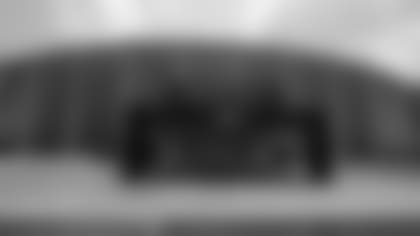They're tearing down the "Eighth Wonder of the World." They're tearing down the Astrodome. Voters recently rejected a referendum that would have authorized as much as $217 million in bonds to turn the dome into a convention center.

Crumbling and dwarfed next to the majestic Reliant Stadium, home of the Houston Texans, the Astrodome once served as evidence of how far-seeking the old American Football League was compared to the older NFL.
Aided by a record $36 million dollar television package and the cream of the college world's top graduating talent, the AFL gave proof that it had arrived with the construction of new stadiums in New York (capacity 60,000), Oakland (capacity 49,500) and Houston (capacity 53,614).
Gone were the rusting old baseball yards, where many of the NFL teams were forced to play with girders and posts blocking patron views, where pipes leaked above the heads of fans as they made their way down narrow corridors that seemed built for an average man, born in the late 19th century. Moreover, so many of the baseball stadiums were located in what one writer was kind enough to call, ahem, "rundown neighborhoods."
In a cover story in Pro Football Illustrated, Bill Gleason was quick to point out that in 1963 the game lived "in places like Chicago's Wrigley Field, New York's Yankee Stadium, Philadelphia's Franklin Field, and Los Angeles' Coliseum. [The fan] lives in those places, and he's comfortable most of the time simply because his guardians keep him on a diet for one reason or another."
The AFL's new stadiums, which might seem out of date today with their Jetson-like architecture, had gleaming bathrooms, wider concourses and better parking, to name a few of their amenities. In comparison, the Eagles' Franklin Field had sideline seats near the end zone that faced comparable seats in the endzone on the opposite side, not facing toward the 50-yard line, as newer stadiums did. As for parking, the large lots we take for granted today were non-existent.
No stadium, however, was more revolutionary in its time than the Astrodome. The dome's tip rose 18 stories above the south of Houston and measured 712 feet straight across. There were six levels in the grandstands and fans entered at the top of the third level, half walking down to their seats.
The elastic roof spanned the wall-to-wall distance, without any obstructing supports. Air conditioning from the largest plant ever built at the time flowed overhead at a rate of two million cubic feet per minute. The football configuration could be converted from baseball in 10 minutes by simply punching a button.

But the dome was heading in the direction of all great construction projects by the time the Chiefs met the Houston Oilers there in the 1993 NFL playoffs. The carpet often came up from the floor as players were taken down by tackles and running backs – Marcus Allen in that 1993 playoff game for one – suffered numerous rug burns after an afternoon of hard sliding.
The visiting locker room was on the second level and players had to access the field up steps, past fans who could be heard later pounding on the door as they left following the game.
A recent Wall Street Journal editorial went so far as to call the Astrodome "a lousy sports venue – too cavernous for baseball," while making the argument that "football should be played outdoors." Maybe so, but when it was built it sent a signal far and wide that the AFL would not simply look to copy the old but to seek more fan-friendly confines for their teams and, more importantly, their fans.
The NFL eventually took notice and the rest – including the aging Astrodome – is, as they say, history.













